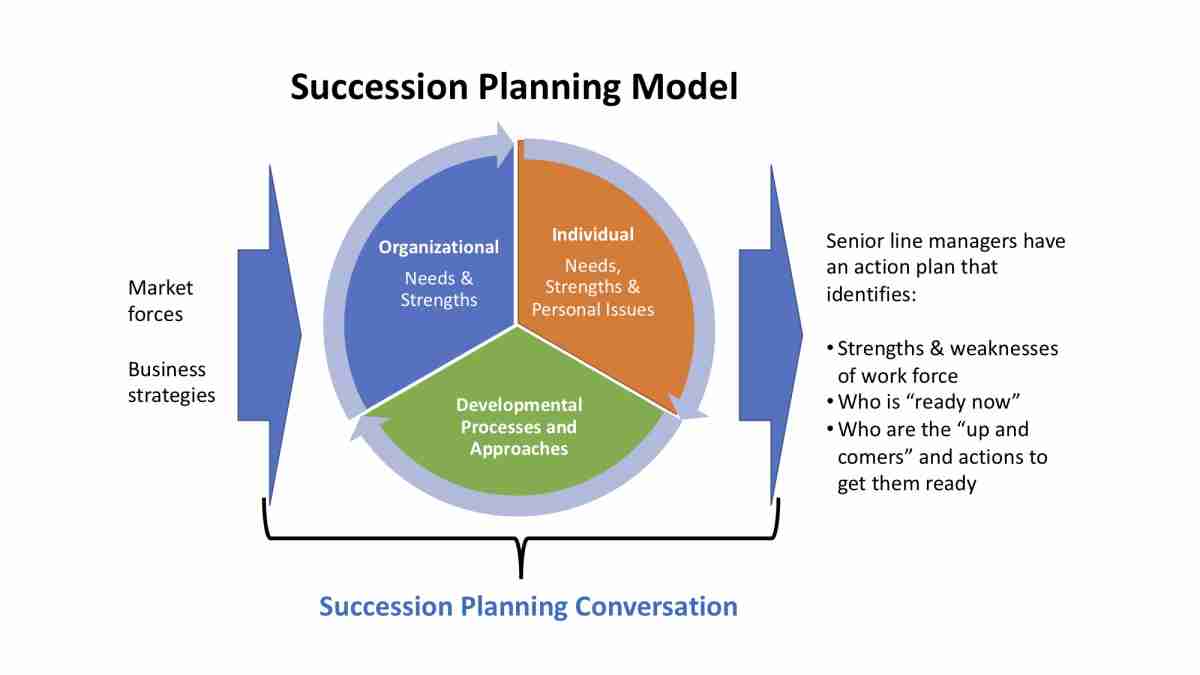Think about how often a key person leaves and the organization is surprised—and has no one who can step in. Or there’s an opportunity for the business to grow, but no one has the skill to make it happen. These situations only get worse when there is a war for talent. A solid succession planning process increases the likelihood that the organization has the individuals with the right skills and motivation when the business needs them.
The basic steps of succession planning are the same regardless of organizational size. Larger organizations have complex approaches because of their scale—not because the fundamentals are different.

When developing a succession planning model, you first must be sure to understand the market forces and strategies that set the path of the organization, so you have a strategic guide for context and direction. As famous baseball coach Yogi Berra wryly noted, “If you don’t know where you are going, you will probably end up somewhere else.”
The magic of succession planning happens during a series of senior leader structured conversations that must answer questions about what the business needs and how to get the most from individuals. To do this, senior leader discussions should integrate three perspectives to create a succession plan: the organizational needs, an understanding about key individuals, and the developmental processes needed to ready the individuals for future roles or to solve critical organizational issues.
ORGANIZATIONAL NEEDS
Organizational needs vary—for example, the growth of the Millennial workforce and their expectations, an aging senior management team that will retire in the next few years, or changes in market competition that require innovative approaches to the business. Identification of these types of issues will drive the developmental plans to ensure the right talent will be available and create the solutions necessary for success.
INDIVIDUAL NEEDS
This part of the discussion examines individuals’ strengths and developmental needs, their personal issues (e.g., dual-career family, etc.), their performance, sources of motivation, and career aspirations. After understanding the individuals, a gap analysis will help bring these first two steps together—to identify how the current talent pool matches up with the organizational needs.
DEVELOPMENTAL PROCESSES
The third segment of the succession planning conversation uses all the approaches and tools for talent development. This is when you’ll create an action plan to close your talent gaps. The action plan allows senior line managers to identify:
- The specific issues driving the need for talent in the business—and the implications in regard to the strengths and weaknesses of the internal workforce.
- Who will fill what job(s)? There should be a list of “ready now” candidates for each important position, and an understanding of any concerns that might have an impact on the plan.
- Who are the “up and comers,” what are their motivators and career interests, and where does the organization need them? What developmental plans are necessary to get them ready?
Succession planning needs to be an ongoing set of conversations that provide managers with the critical information and resources to engage employees and ensure the business has the talent ready to support successful future business performance.
Ross Tartell, Ph.D., is currently adjunct associate professor of Psychology and Education at Columbia University. Dr. Tartell also consults in the areas of learning and development, talent planning, and organizational development. He received his MBA in Management and his Ph.D. in Social Psychology from Columbia University. He formerly served as Technical Training and Communications Manager – North America at GE Capital Real Estate.


